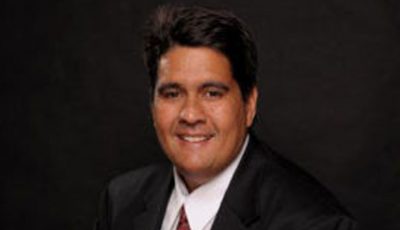Sterling NH police commish et al
A friend once wondered why people kept saying “niggah” in conversations among the Zhongguoren he met both in English and Chinese during his last foray to China.
For the non-Chinese speakers, ‘nig-eh’ (“eh” barely audible) is an all-purpose gap filler, like the favorite “like” to our teenagers, and “Uh-uh” to old-timers. It also sounds too closely like “niggah,” hardly a word of comfort in Jamaica (both Carib or Yankee), but Walt kept his cool and gave everyone the benefit of the doubt. He was greatly relieved when I clarified its use in this column.
For those under-20, “niggah” is either liberally sprinkled in rap lyrics, or avoided by the liberal over-20s in public discourse as the pronunciation for the racist slur “nigger,” originally from the Latin word negro for “black,” before it took to the “shoe shuffling black ignorant slave of African descent” in America and given the sting in reference to slaves from West Africa. Its particular usage as a word, and the reality that it refers to in the U.S., is not pleasant. I went to university in three places in the U.S. South and I can sit all night to relate stories of how the word got a front seat in my meditative council for the frequency of its use and abuse!
Now, we have the NBA Clippers’ owner Donald Sterling balking at paying a fine imposed by the basketball association after being videotaped expressing his disdain for “black” athletes and celebrities! His high-priced lawyer does not see any violation of law; he is putting up a fight even of the ownership of the franchise itself. As an obvious tactic, the light has been shifted into the alleged blackmailing propensity of Sterling’s rather high-maintenance girlfriend!
Comes New Hampshire, Wolfeboro Police Commissioner Robert Copeland, a Caucasian 82-year-old, acknowledging to his fellow police commissioners in an email that he used the racial “nigger” slur against Obama because he really meant the term to be pejorative of the President and his perceived lackluster (at best) performance, evidently more than a little short of his expectation. Nor will he be “politically correct” and apologize for publicly patronizing its use.
The black-and-white divide does still run up the marquee of high profile people, never mind that it is no longer common and widespread at the ground level. Let me run the reality of the divide in my four levels of perceptions.
The sense level is where it begins. I am pretty well-endowed with the melanin requirement of existence in equatorial real estate, “born beautifully brown” in Pinoy mythology, and coupled with the trust that the WAY LIFE IS (Judeo-Christian-Muslim) precludes any other reality, I am quite at peace with the givenness of the color of my skin. Not so with many, the liberals included, who think that tanning make one “glamorous,” and the lily white conservatives who see a shade of tan more appropriate on the hired help.
The social Darwinism of the previous two centuries created the assertion that the light skinned in the temperate zone is an advance in the evolution of the human specie. The emotional gulf provided by the notion that “white is beautiful” and that there are no two shades about it, is pretty much a subjective preference, adhered to from the bias and prejudice of one’s upbringing. Given their ages, Sterling and Copeland may belong to this category.
Commercial value designers centered in Paris, New York, Tokyo, and Soho, way up north of the Tropic of Cancer, leave us unsurprised that greed promotes skin whiteners and related cosmetics in the global market with the intensity of selling the opaque white fluid fat-and-protein rich cow juice at considerably higher milking rate. One of my students was surprised to find herself and her mother the only folks in Oahu’s Waikiki shading themselves under a parasol from the sun.
Personal quirks and propensities, individual views and learned perceptions are understandable but when the gravity of vision and mission either through religious cults (“we are all going to be white in heaven”) or political cadres (Aryan supremacists, Sieg Heil!) take on organized social discipline and organizations, then the rule of law comes to play.
I am a resident of Hawai’i where the planetary color is the rainbow, giving not much weight to the black-and-white divide. Nor was John Harlan in 1896 impressed with the majority opinion of the Plessy v. Ferguson Supreme Court decision that justified the “separate but equal” provision’s legality. Harlan’s minority opinion said: “Our constitution is color-blind, and neither knows nor tolerates classes among its citizens.” The Civil Rights Act of 1964 affirmed that.
Sterling and Copeland are probably hoping to find out whether Harlan’s sentiment is still a minority opinion since it is no longer the legal one. They are consigned into ancient history.



























